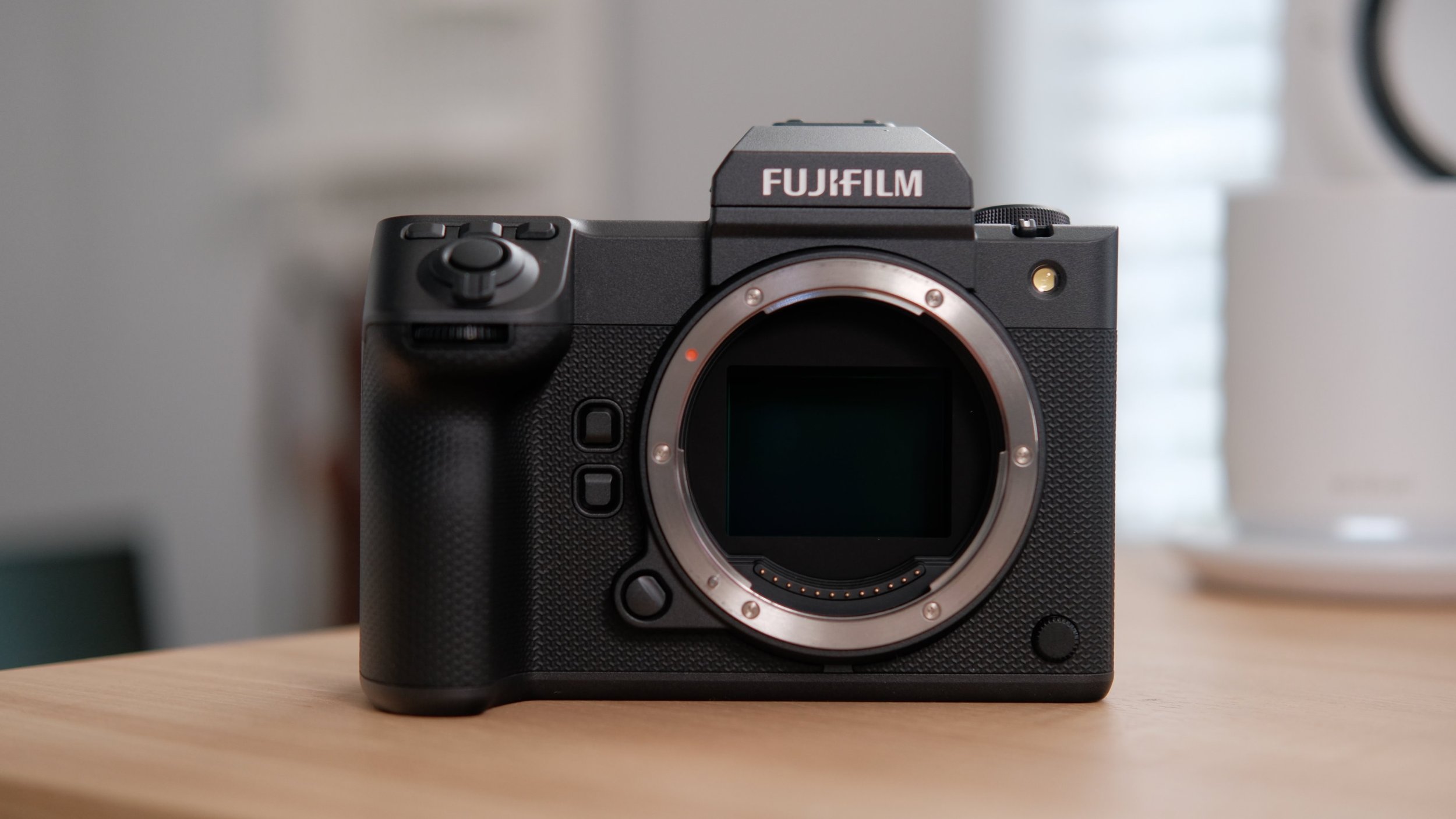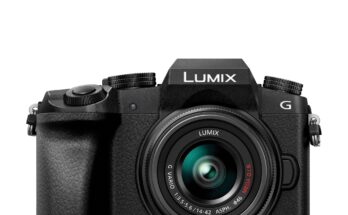The Sony A7S III is often regarded as the best mirrorless camera for low-light photography. Its ability to shoot stunning images in dim conditions sets it apart.
Capturing the perfect shot often hinges on how well a camera performs in less-than-ideal lighting. Photography enthusiasts and professionals alike consistently seek out the best tools for low-light scenarios. The choice of a mirrorless camera for these situations not only impacts the quality of the photos but can make the difference between a missed opportunity and a breathtaking image.
The Sony A7S III, renowned for its exceptional high ISO performance and fast autofocus system, excels in capturing crisp, detailed images even in the darkest environments. Its full-frame sensor is specifically designed for sensitivity to light, making it a top contender for anyone serious about low-light photography. Choosing the right camera involves considering factors such as sensor size, image stabilization, and lens compatibility—all areas where the Sony A7S III stands out in the market.

Credit: www.dpreview.com
Capturing Darkness: Mirrorless Mastery In Low Light
Nighttime brings out a magical world. Skies sparkle with stars. Streets glow with city lights. Mirrorless cameras stand at the forefront, ready to capture it all. They are powerful tools for photographers. They fight against the grain, and loss of detail. In low light, they become your beacon. Each snap can unravel the beauty hid in shadows.
The Quest For Clarity After Dusk
The right mirrorless camera makes moments shine in the night. Fast shutter speeds and high ISO performance matter. Great low-light cameras reduce noise. They overcome the darkness with clear, vivid pictures.
- Sony A7S III: Champion with impressive ISO range
- Nikon Z6 II: Great all-rounder with strong low-light ability
- Canon EOS R6: Excels in focusing and clarity at night
Lenses And Sensors: Partners In Low-light Photography
A perfect duo can change the game. Wide aperture lenses (f/1.4, f/1.8) let more light in. Larger sensors (like Full-Frame) capture the scene with less noise. Together, they snatch details from darkness. Shoot with confidence even when the sun sets.
| Camera Model | Lens Aperture | Sensor Size |
|---|---|---|
| Sony A7S III | f/1.4 | Full-Frame |
| Nikon Z6 II | f/1.8 | Full-Frame |
| Canon EOS R6 | f/1.8 | Full-Frame |
Revolution Of Mirrorless Cameras In Low-light Performance
The rise of mirrorless cameras has been a game-changer for photography enthusiasts. These cameras offer impressive low-light capabilities once reserved for high-end DSLRs. With advancements in sensor technology and processing power, mirrorless models are dominating night photography, making them ideal for capturing stunning images in nearly any lighting condition.
From Dslr To Mirrorless: A Bright Transition
Switching to mirrorless means less bulk and more performance. Traditional DSLRs used mirrors to reflect the image into the viewfinder. Mirrorless cameras, though, eliminate the mirror mechanism. This reduces weight and allows for a more straightforward light path onto the image sensor, enhancing low-light photography.
The benefits become clear:
- Smaller camera bodies that are easier to handle.
- Better autofocus in dim conditions due to on-sensor technology.
- Faster burst shooting, crucial for moving subjects at night.
Technological Innovations Fueling Superior Low-light Results
Mirrorless cameras excel in low light because of cutting-edge tech. They wield larger, high-resolution sensors capable of capturing more light. Advanced image processors reduce noise and retain details in shadows and highlights.
Innovations that stand out:
| Feature | Advantage |
|---|---|
| Back-Illuminated Sensors | Increase light absorption. |
| Image Stabilization | Reduce camera shake at slow shutter speeds. |
| High ISO Performance | Improve clarity in low-light without flash. |
Leading mirrorless camera brands push these features further. They innovate constant firmware updates, enhancing the camera’s low-light ability over time.
Top Contenders For Low-light Champions
Photography doesn’t stop when the sun goes down. Some of the most inspiring moments happen in challenging light. Mirrorless cameras have become the go-to choice for photographers craving performance in low-light conditions. Let’s meet the champions leading the game in this specialized field.
Comparing The Giants Of Mirrorless Technology
When performance matters, two brands often come to the forefront: Sony and Canon. The Sony A7S series, known for its exceptional night vision, and the Canon EOS R line, with its groundbreaking sensor technology, push the boundaries of what photographers can capture after dusk.
| Camera Model | Sensor Type | ISO Range | Autofocus Points |
|---|---|---|---|
| Sony A7S III | Full-frame CMOS | 80-102,400 (Expandable to 409,600) | 759 |
| Canon EOS R5 | Full-frame CMOS | 100-51,200 (Expandable to 102,400) | 1,053 |
Features That Make Or Break Low-light Imaging
- High ISO Performance: Imperative for capturing scenes in near-darkness without a flash.
- Fast Lens Compatibility: Allows more light to hit the sensor, crucial for a crisp, noise-free image.
- Advanced Image Stabilization: Key for reducing camera shake and achieving clear shots at slow shutter speeds.
- Sophisticated Autofocus Systems: Essential for locking onto subjects when light is scarce.
The best low-light mirrorless cameras offer an amalgamation of these features. This ensures that no matter how dim or challenging the situation, the camera can handle it with ease, offering photographers a pathway to creativity under the stars.
Field Tests: Mirrorless Cameras In Nighttime Shoots
As the sun sets, photographers often face a common question: Can their camera capture the beauty of the night effectively? This is where mirrorless cameras step into the spotlight. Different models offer unique strengths in low-light conditions. The latest field tests provide concrete insights into the best mirrorless cameras for nighttime shoots.
Real-life Results: User Experiences And Reviews
In the quest for capturing stunning night scenes, many users turn to online forums and reviews. Testimonials from real-life scenarios reveal top performers in the field. Here’s a snapshot of user experiences with popular mirrorless cameras during nighttime photography:
- Sony A7S III: Praised for its high ISO capabilities and dynamic range.
- Nikon Z6: Noted for its balanced performance and low-light autofocus.
- Fujifilm X-T4: Admired for noise control and color fidelity in dim settings.
Photography enthusiasts often share before-and-after shots demonstrating each camera’s low-light prowess. These real-world examples offer a glimpse into the camera’s performance outside lab conditions.
Analyzing Image Quality: Noise, Color, And Detail Retention
Reviewing images from a technical standpoint involves looking closely at noise levels, color reproduction, and detail retention. Experts often use controlled conditions to assess cameras rigorously. Let’s break down the aspects of image quality in low light:
| Camera Model | Noise at High ISO | Color Accuracy | Detail Preservation |
|---|---|---|---|
| Sony A7S III | Minimal noise even at ISO 102400 | True-to-life colors | Excellent detail, even in shadows |
| Nikon Z6 | Handles noise well up to ISO 25600 | Vibrant, yet accurate | Sharp details with little softening |
| Fujifilm X-T4 | Controlled noise up to ISO 12800 | Rich, film-like colors | Crisp details with minimal loss |
To further elaborate on image analysis, noise reduction technology is key in these cameras. Each model employs its unique algorithm to manage noise while maintaining clarity. Colors must remain true even without abundant lighting. Also, preserving details when shadows dominate is crucial for a successful low-light imagery.
Making The Most Of Your Low-light Mirrorless Camera
Making the most out of low-light conditions with a mirrorless camera can transform your photography. Understand the right accessories and techniques, and you’ll master the art of capturing stunning images even when the light is far from ideal. Let’s explore how to harness your camera’s full potential.
Essential Accessories For Enhanced Performance
To elevate your low-light photography, consider adding these accessories to your gear:
- Fast Lenses: A lens with a wide aperture, like f/1.8 or lower, lets in more light.
- Sturdy Tripod: It stabilizes your camera for longer exposures without blur.
- Remote Shutter Release: This tool helps avoid camera shake when pressing the shutter button.
- Extra Batteries: Long exposure times can drain batteries quickly, so have spares handy.
Techniques To Maximize Low Light Capabilities
With the correct technique, you can pull off incredible low-light shots. Here’s how:
- Manual Focus: Auto-focus can struggle in the dark. Switch to manual for precision.
- Higher ISO: Don’t fear high ISO. Modern cameras handle noise better than ever.
- Slow Shutter Speed: Use slower speeds to let more light hit the sensor, capturing clearer low-light photos.
- Image Stabilization: Engage your camera or lens’s stabilization feature to reduce shake.
Embrace these tools and techniques, and you’ll be shooting breath-taking low-light photos in no time.

Credit: www.pcmag.com
Future Of Low-light Photography With Mirrorless Cameras
Discover the future of low-light photography through the lens of mirrorless cameras. These advanced gadgets have transformed night-time photography. Bright, clear photos in the dark are now in reach without heavy equipment.
Emerging Technologies On The Horizon
New tech brings excitement for photo enthusiasts. Mirrorless cameras are evolving with features that redefine low-light photography:
- Bigger Sensors: Larger sensors capture more light.
- Enhanced Processors: They process images faster, even in the dark.
- Improved ISO Performance: This minimizes noise when increasing the ISO.
With these advancements, capturing vivid photos in poor light will become even easier. Photographers can expect sharper images and enhanced color fidelity.
Predictions: What Next For Mirrorless In The Dark?
The trend for mirrorless cameras is clear: more powerful, yet simpler to use. Here’s what’s likely to come:
| Feature | Impact |
|---|---|
| AI Algorithms | Smart auto-adjustments create perfect exposures at night. |
| Electronic Viewfinders | Enhanced EVFs display bright, clear images, even in low light. |
| Cloud Integration | Instant backup and access to settings optimized for the dark. |
Future mirrorless models will enhance night-time shoots with new features. They will deliver stunning clarity and noise-free photos under starry skies. Get ready for a bright future in low-light photography with mirrorless cameras.

Credit: www.jbivphotography.com
Frequently Asked Questions Of Which Mirrorless Camera Is Best In Low Light?
What Mirrorless Camera Is The Best In Low Light?
The Sony A7S III excels in low light conditions, offering exceptional image quality and high ISO capabilities.
What Camera Is Better In Low Light?
DSLRs and mirrorless cameras with full-frame sensors excel in low light. Models like the Sony a7S series and Nikon Z6 are renowned for their superior low-light performance.
What Camera Lens Is Best For Low Light?
A lens with a wide aperture, such as f/1. 4 or f/1. 8, excels in low light conditions. Prime lenses often offer these wide apertures, making them ideal for such scenarios.
Are Mirrorless Cameras Good At Night?
Mirrorless cameras excel in low-light conditions due to their large sensors and advanced image stabilization. Their high ISO performance allows for better night photography with less noise.
Conclusion
Navigating the landscape of mirrorless cameras can be tough, especially for low-light photography. This guide aimed to simplify that journey. Whether prioritizing high ISO capabilities, lens selection, or stabilization, remember to consider your specific needs. The perfect pick awaits to elevate your nocturnal shoots to stunning heights.
Keep shooting, keep exploring.



